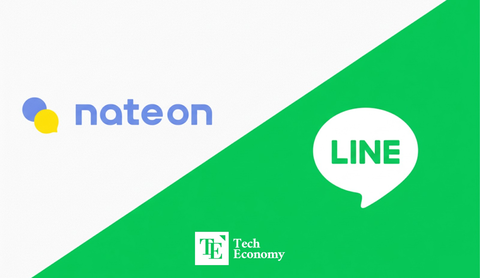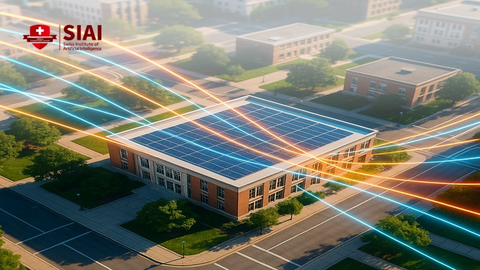[해외 DS] 예측하면서 움직이는 쥐, 인간의 상상력과 같을까?
입력
수정
쥐의 뇌에 BMI를 연결하여 뇌 활동 추적, 장소 세포로 인지 지도 생성 눈에 보이지 않는 장소나 물체에 대해 생각할 수 있는 것으로 나타나 일부 과학자들은 해마의 예측 기능이 상상력과는 구분되어야 한다고 주장
[해외DS]는 해외 유수의 데이터 사이언스 전문지들에서 전하는 업계 전문가들의 의견을 담았습니다. 저희 데이터 사이언스 경영 연구소 (GIAI R&D Korea)에서 영어 원문 공개 조건으로 콘텐츠 제휴가 진행 중입니다.

최근 사이언스 저널에 발표된 연구 결과에 따르면 설치류인 쥐도 미래를 예측하고 시각화할 수 있는 능력을 지니고 있다는 사실이 밝혀졌다. 하워드휴즈 의학연구소 연구진은 쥐들에게 뇌 활동을 추적하는 장치를 부착하고 가상 현실 환경에서 그들의 정신적 움직임을 관찰했다. 이러한 실험을 통해 쥐들이 눈에 보이지 않는 장소나 물체에 대해 생각할 수 있다는 것이 확인되었다.
런던 택시 기사처럼 '길눈'이 밝은 쥐
상상력은 미래의 시나리오를 시각화하는 핵심적인 능력으로, 이러한 능력은 특히 인간의 특성 중 하나로 여겨졌다. 해당 연구는 쥐 뇌의 해마에 초점을 맞추어 다른 동물들도 이와 같은 미리 생각하는 능력을 갖출 수 있는지 확인했다. 해마는 기억을 저장하고 탐색하는 데 중요한 영역으로, 특히 설치류의 해마는 공간 처리 능력이 뛰어나다. 설치류는 자신이 탐색하는 모든 환경에 대해 GPS 지도와 같은 모델을 만든다.
상세한 인지 지도는 설치류 해마에 있는 '장소 세포'라고 불리는 공간 뉴런에 의해 만들어지며, 동물이 특정 지역에 도달할 때 활성화된다. 신경 이동 경로를 따라가면 연구자들은 쥐가 어디에 있었는지 정확히 파악할 수 있다. 그러나 인간 피험자와 달리 쥐는 자기 생각을 직접적으로 표현할 수 없으므로 연구팀은 쥐의 뇌에 이식할 수 있는 뇌-기계 인터페이스(BMI)를 설계했다. 이 장치는 쥐의 해마에서 전기 활동을 효과적으로 기록하고 이를 디코더로 변환하는 작업을 수행한다. 이를 통해 연구진은 어떤 공간 뉴런이 활성화되었는지 추적할 수 있었다. 동물이 창문 근처의 방구석과 관련된 신경 활동 패턴을 생성하면 디코더가 그 위치를 출력하게 되는 식이다.
머릿속의 GPS로 가상환경에서 게임을 해
체질량 지수를 측정한 쥐들은 스크린으로 둘러싸인 구형 러닝머신 위에 놓였는데, 연구진은 프로젝터를 사용하여 스크린에 가상 현실 환경을 비춰 쥐들이 러닝머신 위를 뛰어다니면서 마치 실제로 이동하는 듯한 착각을 불러일으켰다. 실험의 첫 단계에서는 쥐가 회전하는 러닝머신 위에서 가상 환경을 자유롭게 움직이며 탐색할 수 있게 했다. 가상 환경의 기본 인지 지도를 만들고 나면, 각 쥐는 시뮬레이션에서 지정된 위치를 찾도록 훈련받았다. 쥐가 목표 지점에 도달하면 보상을 받는 설계였다. 각 실험이 진행되는 동안 연구진은 쥐가 특정 영역으로 이동할 때 어떤 공간 뉴런이 활성화되는지 기록했다. 쥐가 전체 환경을 탐색하면서 해마가 만들어 내는 지도를 연구진은 읽을 수 있었다.
그런 다음 과학자들은 쥐가 내면화한 공간과 가상 환경 지도의 일치율을 테스트했다. 과학자들은 쥐가 달리기를 통해 가상 환경을 자유롭게 이동할 수 없도록 러닝머신 위에 쥐를 고정했다. 대신 가상 현실 시뮬레이션을 통해 쥐의 움직임은 쥐의 마음속에서 어떤 공간 뉴런이 활성화되는지에 따라 제어되었다. 쥐는 보상에 도달하기 위해 필요한 단계들을 정신적으로 시각화해야 하는 상황에 놓였다. 연구진은 이 과제를, 순간이동을 소재로 한 2008년 영화에서 따온 '점퍼'라고 불렀다. 두 번째 과제는 '제다이'라고 이름 지었다. 이 과제에서 쥐들은 가상 환경에서 전혀 움직일 수 없었다. 보상을 받으려면 제다이가 멀리 있는 광선검을 소환하는 것처럼 외부 물체를 지정된 보상 지점으로 이동시켜야 했다. 쥐들은 '포스' 대신 공간 뉴런을 활용하여 가상 현실을 통해 물체를 안내해야 했다.
의식적 사고의 산물이냐 무의식의 부산물이냐, 학계 반응 엇갈려
연구진은 쥐 실험체가 두 가지 과제 모두 능숙하게 수행한다는 사실을 발견했다. 점퍼 실험에서는 쥐가 보상의 원격 위치를 기억할 때 해마에 있는 장소 특정 뉴런을 자발적으로 재활성화할 수 있다는 사실을 발견했다. 제다이 실험에서는 멀리 떨어진 물체를 원하는 목적지 쪽으로 움직여 몇 초 동안 유지하면 장소 특정 뉴런을 성공적으로 활성화할 수 있다고 밝혔는데, 이는 마치 사람이 먼 해변 풍경을 상상하면서 특정 물체에 머무르는 것과 비슷한 관측일 수 있다.
하지만 모든 과학자가 위의 결과가 상상력과 관련이 있다고 생각하는 것은 아니다. 해마가 공간을 처리하는 방식에는 동물의 적극적인 사고가 필요하지 않은 예측 요소가 있다고 반박했다. 해마는 항상 다음에 일어날 일을 예측하므로 쥐는 목표에 대해 생각할 필요가 없었다는 것이다. 연구자들이 쥐의 의식적인 생각을 해독하는 대신 해마 내부에 있는 무의식적인 사고흐름을 분석했다는 주장이다. 쥐가 실제로 상상하는지 확인하는 한 가지 방법으로는 가상 현실을 끄고 시각적 피드백을 받지 않은 상태에서, 쥐가 공간 신경 패턴을 다시 만들어 다음 행동을 알려줄 수 있는지 관찰하는 것이다. 영화를 보면서 다음 장면을 상상하는 것과 눈을 감고 상상력을 펼치는 일은 근본적으로 다르다는 해석이다.
Rats Use the Power of Imagination to Navigate and Move Objects in a VR Landscape
Experiments visualize a rodent’s ability to imagine the future
Humans use imagination for far more than daydreaming. The ability to visualize possible scenarios is something we do every single day. We mull over alternative routes to avoid traffic, cook up last-minute dinner plans and mentally prepare for tomorrow’s meeting.
But we are not alone. A new research finding demonstrates quite vividly how humans are not the only species possessing an imaginative ability to think ahead. Researchers recently outfitted several rats with a high-tech device that tracks brain activity and observed how the rodents mentally maneuvered through a virtual reality environment. Their findings, published today in the journal Science, reveal that the rats are capable of seemingly thinking about locations and objects that are not immediately in front of them.
At its core, imagination is visualizing something that is not happening. “The hallmark of human imagination is being able to think about something without doing that action,” says Chongxi Lai, a postdoctoral researcher at the Howard Hughes Medical Center’s Janelia Research Campus in Ashburn, Va., and co-lead author of the new paper. “It can be a simple behavior like lying in bed, closing your eyes and thinking about plans for tomorrow.”
To determine if other animals are capable of utilizing this forethought, the researchers focused on the hippocampus. This region of the mammalian brain stores memories and plays an important role in navigation. Rodents in particular boast a hippocampus that is adept at processing space. “Rodents create a model of every environment they explore that acts like a GPS map,” says Albert Lee, a neuroscientist at Beth Israel Deaconess Medical Center in Boston and a co-author of the new study.
These detailed cognitive maps are created by spatial neurons in the rodent hippocampus called place cells, which activate when the animal reaches a certain area in its environment. Following these neural breadcrumbs would help researchers pinpoint where a rat has been. Unlike human subjects, however, rats are unable to articulate their thoughts. So the team had to figure out another way to access the spatial data stored inside the rodents’ hippocampi.
Lai designed a brain-machine interface (BMI) that was implanted into the rodents’ brain. The device effectively recorded the electrical activity in the rats’ hippocampus and rapidly translated it on an external device called a decoder. This allowed the researchers to track which spatial neurons were activated. “If the animal generates a neural activity pattern related to the corner of the room near the window, then the decoder is going to output that position,” Lee says.
Once they were outfitted with their BMI, the rats were each placed on a spherical treadmill that was surrounded by screens—a setup that resembled an ice cream cone wrapped around a spinning globe. The researchers used a projector to broadcast a virtual reality environment on the screens that created the illusion that the rats were moving through space as they scurried on top of the treadmill.
The first step was allowing the rats to create a baseline cognitive map of this virtual environment. The animals were allowed to move freely on the spinning treadmill as they explored. Each was trained to find a designated location in the simulation. Once the rats reached this spot, they received a liquid reward.
During each test, the researchers recorded which spatial neurons were activated when the rats moved to certain areas. “As the rat explores the whole environment, we can read the map that its hippocampus creates,” Lee says.
The scientists then put the rats’ mental mapping skills to the test. They fixed the rats atop the treadmill, preventing the animals from freely moving about the virtual environment by running. Instead the rats’ movement through the virtual reality simulation was controlled by which spatial neurons they activated in their mind. This forced them to mentally visualize the steps it would take to reach their reward. The researchers called this task “Jumper,” a nod to a 2008 movie featuring teleportation.
The scientists invoked another cinema reference for the second task, which they referred to as “Jedi.” In this task, the rats were not able to move at all through their virtual environment. To get the reward, they were forced to move an external object toward the designated reward spot like a Jedi summoning a distant lightsaber. But instead of the Force, the rats had to harness their spatial neurons to guide the object through the virtual reality.
The researchers found that their rodent subjects were adept at both tasks. In Jumper, the team found that the rats could voluntarily reactivate the place-specific neurons in their hippocampus as they recalled the remote location of their reward. Jedi revealed that they could also successfully activate these neurons as they moved a remote object toward the desired destination and hold it there for several seconds, which could be akin to a human dwelling on a certain object while picturing a distant beach vista.
But not all scientists are sold that these results are tied to imagination. According to neurobiologist Matthew Wilson, who studies rodent learning and memory at the Massachusetts Institute of Technology and was not involved with the study, there is a predictive component to how the hippocampus processes space that does not require active thought from the animal. “The hippocampus is always anticipating what’s going to come next,” Wilson says. “[The rats] don't have to think about the goal.” Instead of decoding rats’ active thoughts, he thinks the researchers tapped into the subconscious predictive code inside the animals’ hippocampus.
Wilson thinks that one way to determine whether the rats are really using an imaginationlike thought process would be to turn off the virtual reality and see if the rodents can re-create the spatial neural patterns without moving or receiving any visual feedback to inform their next move. “Right now, it’s like they’re imagining the next frame of a movie while they’re watching it,” he says. “But imagination is what happens when you close your eyes, and you create these perceptions internally.”





















